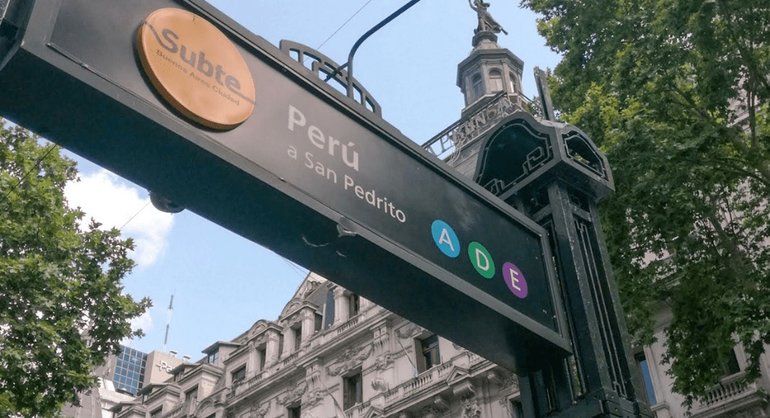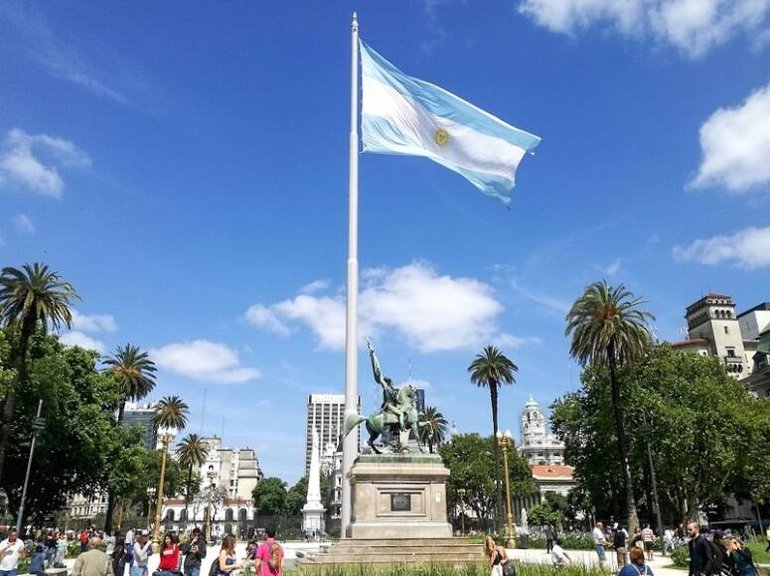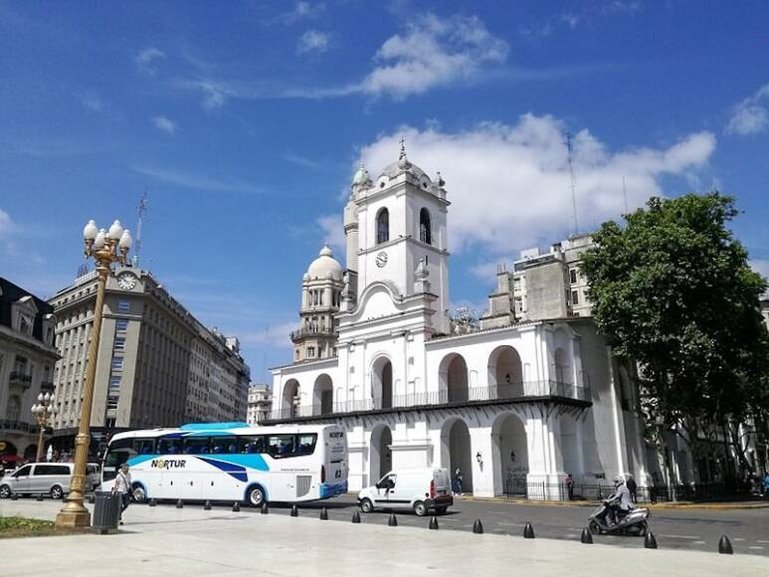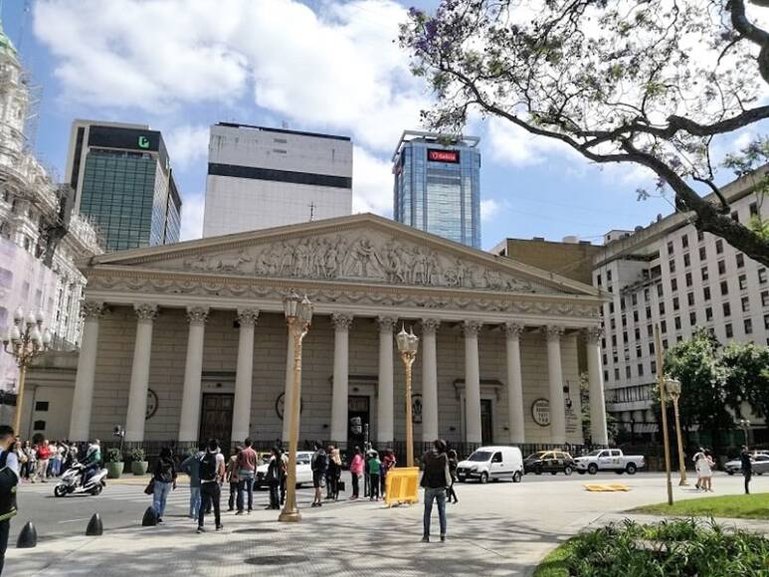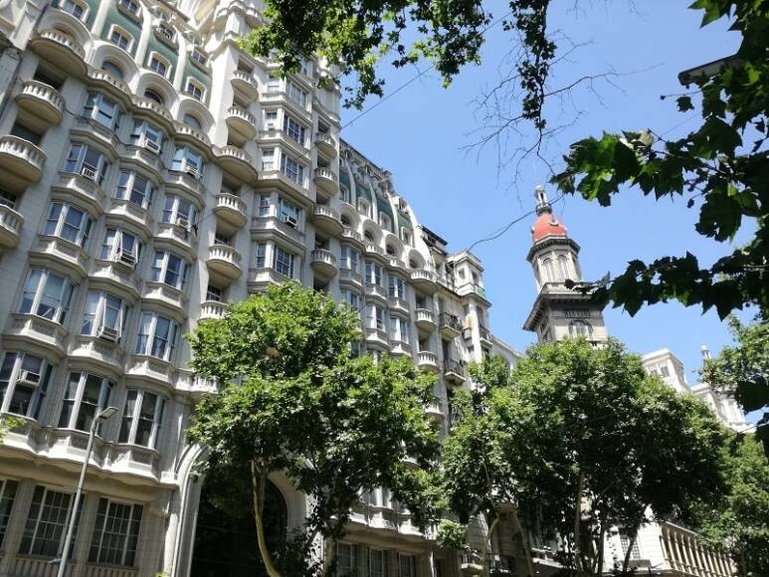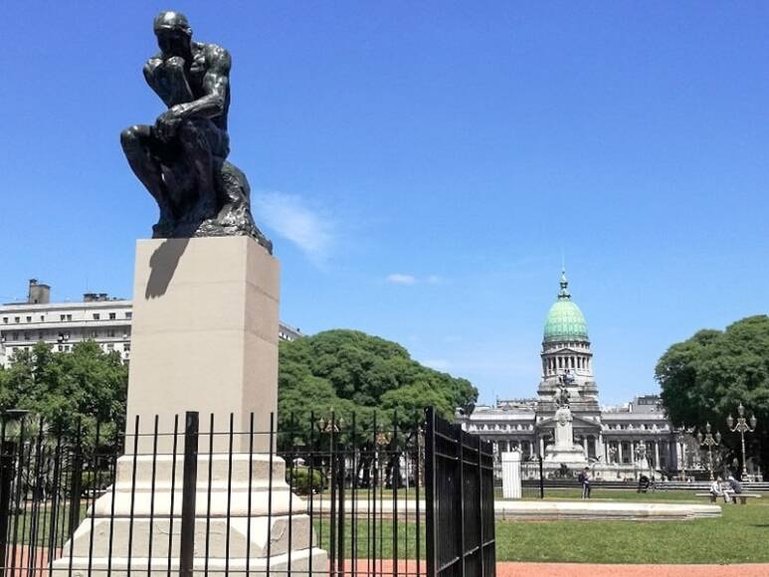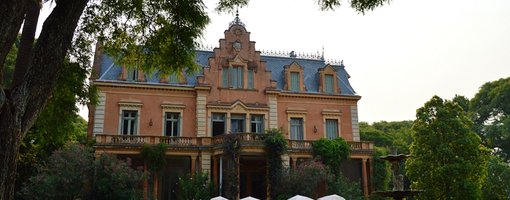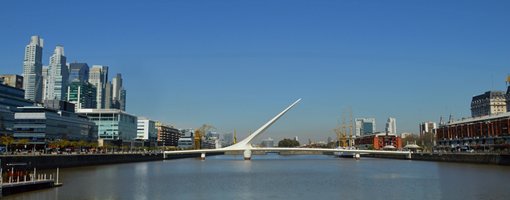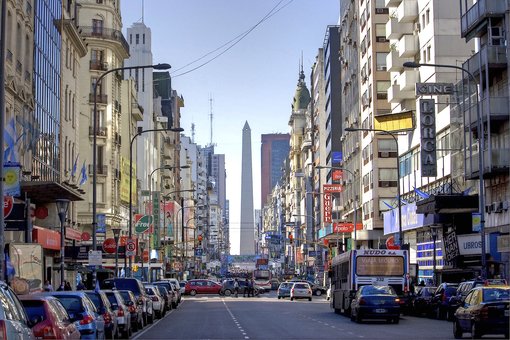Buenos Aires is a large city, so to get to know it better, it's convenient to divide it into sectors and focus on each particular area. One of these routes takes you from Plaza de Mayo to Plaza de los Dos Congresos, passing through the legendary Avenida de Mayo.
To help you better organize your visit to the Argentine capital, here are 5 must-visit places in Buenos Aires.
The walk from Plaza de Mayo to the Congress building takes approximately 30 minutes. Along that path, you'll be able to visit our must-see places in Buenos Aires.
5 Must-See Places in Buenos Aires from Plaza de Mayo to the Congress building
The journey begins at Plaza de Mayo, the epicenter of Buenos Aires. This square marks the birthplace of the city when it was founded for the second time by Juan de Garay in 1580. The first foundation was made by Pedro de Mendoza on the cliffs of the current Parque Lezama in 1536.
Its name refers to the May Revolution of 1810, when the demands for independence from Spain began right in this very place.
Plaza de Mayo
In the center of the plaza stands the May Pyramid. It was the city's first monument, built to commemorate the first anniversary of the Revolution in 1811.
However, the current pyramid is not the original one.
Many times attempts were made to destroy the 1811 pyramid because they did not see it as very aesthetic. Eventually, it was decided to construct a new pyramid while preserving the original one, which remains inside. The original pyramid was moved to its current location, and the statue of Liberty, which crowns the pyramid, was also included.
The plaza has undergone several renovations over the years.
Since colonial times, this plaza has been a chosen location for celebrations and festivities, as well as for protests and demonstrations.
In addition to exploring the plaza, here are three other must-see attractions in Buenos Aires: the Casa Rosada (Government House), the Cabildo (Old City Hall), and the Metropolitan Cathedral.
1- Casa Rosada
Another must-see attraction in Buenos Aires is the Casa Rosada, also known as the Government House.
The name refers to the color chosen to paint its façade. The pink color is a blend of the punzó red of the Federalists and the white of the Unitarians. In this way, the pink color symbolizes the symbolic union of the two parties that played a prominent role in the civil wars of the first half of the 19th century.
It is located on the site where the Fort of Buenos Aires and the New Customs House or Taylor's Customs House used to stand.
The origin of the current Government House began in 1873 with the construction of the Postal and Telegraph Building. Later, the Government Palace, a building identical to the Postal and Telegraph Building, was constructed. Both buildings were connected in 1886 through the portico that gave shape to the current structure.
The interior of the Casa Rosada can be explored through a guided tour, but it is necessary to reserve a time slot at least 15 days in advance.
You can also visit the museum, where you will see the remains of the Customs House and the Fort that were previously located on the site. Additionally, you can admire the mural painting by David Alfaro Siqueiros, created in 1933.
2- Cabildo
The Cabildo is an emblematic building. However, what you see today is only a part of what it originally was. Even since the Second Foundation of Buenos Aires, it had a designated space for its location. Its construction was completed in 1610, but it continued to undergo remodeling for another 200 years.
It served as the Colonial Cabildo and was the main stage of the May Revolution of 1810. The images depicting the people with umbrellas in front of the Cabildo are famous.
With the opening of Avenida de Mayo, it was partially demolished. At that time, three arches on the north side were removed. Subsequently, three arches on the south side were removed for the construction of Diagonal Julio A. Roca.
Inside, you can visit the National Museum of the Cabildo and the May Revolution. In addition to exploring the building's interior, there are exhibitions on various historical themes.
3- Metropolitan Cathedral
The main Catholic temple is located in front of Plaza de Mayo, on the same site designated by Juan de Garay when he founded the city in 1580. From the first church, a simple adobe chapel, the building underwent six modifications until reaching its current version.
This last stage began in 1752 and was only completed in 1911, resulting in a combination of different architectural styles, mainly influenced by Europe. The neo-classical façade, with columns and a pediment, gives it more resemblance to a classical temple than a Catholic cathedral. The architects drew inspiration from European buildings, including the Madeleine Church in Paris and the Bourbon Palace, also located in the French capital.
Inside the Cathedral, the Baroque-style Main Altarpiece stands out.
Adjacent to the Cathedral is the Mausoleum of General José de San Martín.
Mausoleum of General José de San Martín
The inclusion of the remains of the Liberator of America in the Cathedral sparked controversies since San Martín was a Mason, and the Church did not allow his entrance into a consecrated space. However, they eventually reached an agreement, and the mausoleum was constructed outside the boundaries of the cathedral, in the Chapel of Our Lady of Peace.
The Mausoleum of General José de San Martín is permanently guarded by two grenadiers. Every two hours (between 9 am and 5 pm), you can witness the changing of the guard. It is a visit that you cannot miss when exploring the must-visit places in Buenos Aires.
Avenida de Mayo
After leaving Plaza de Mayo, we recommend continuing your visit along Avenida de Mayo.
It was the first boulevard in Buenos Aires, inspired by the grand boulevards of Paris, and the first avenue in Argentina and South America.
The construction of the city's first subway line, Line A, also took place here, making it the first subway line in Latin America.
The avenue was opened in the 19th century, which required demolishing part of the Cabildo building and some houses owned by the upper bourgeoisie in the area.
As you stroll along this avenue, you will come across many notable buildings. These include the Palacio Paz, the Café Tortoni, and the Avenida Theater.
Crossing Avenida 9 de Julio, you will come across the Ministry of Public Works (the only building that was not displaced during the construction of the avenue), where you can see the faces of Evita displayed.
Additionally, you will find the Monument to Don Quixote and the famous Obelisco at the intersection with Avenida Corrientes.
4- Palacio Barolo
This office building was constructed in the early 20th century, but what makes it truly fascinating is its architectural inspiration from Dante Alighieri's Divine Comedy.
The building is divided into three sections: Hell, Purgatory, and Heaven. The architectural elements throughout the building emphasize the literary references. For instance, the 9 vaulted entrances represent the 9 circles of Hell.
Stylistically, the Palacio Barolo combines elements of Neo-Romanesque and Neo-Gothic architecture, culminating in an Indian-style dome. These styles borrowed from European architectural traditions blend with modern construction techniques from the United States. The building stands at a height of 100 meters and is crowned with a rotating lighthouse, making it visible from Uruguay.
Interestingly, there is a similar building to Palacio Barolo in Uruguay called Palacio Salvo, located in Plaza Independencia, Montevideo.
The dome, inspired by a Hindu temple dedicated to love, symbolically represents the union of Dante and Beatrice, the protagonists of the Divine Comedy.
If you wish to explore the interior of this building, guided tours are available.
Plaza del Congreso
Plaza del Congreso was designed by the French landscape architect Carlos Thays and features French-style sculptures and gardens. Its construction was completed in 1910 to celebrate the First Centennial of the May Revolution.
In this square, you will find the Monument to the Two Congresses fountain, which was created in Belgium to commemorate the Assembly of the Year XIII and the Congress of Tucumán.
5- Congress building
It was built to house the Legislative Power. Thus, the Palace of Congress forms one end of the civic axis of Buenos Aires. It is connected -through Avenida de Mayo- to the Casa Rosada and the Cabildo at the other end.
This building, with its eclectic style, stands out for its enormous 80-meter-high dome, with the characteristic green color of oxidized metal. It is the second-largest congress palace in the world, after the British Parliament.
Adjacent to Plaza del Congreso is Plaza Mariano Moreno. In this square, you will see the Monolith that symbolizes Kilometer Zero, the starting point of Argentina's road network. The monolith takes the form of a cube with its four sides pointing to the four cardinal points.
Rodin's "The Thinker"
Also located in this square is one of the copies of Auguste Rodin's "The Thinker."
The artwork arrived from Paris in 1907, thanks to the efforts of Eduardo Schiaffino, the first director of the Museum of Fine Arts in Buenos Aires. It was first exhibited during the celebrations of the First Centennial of the May Revolution.
While it is a copy, the bronze casting was made directly from Rodin's original mold, bearing the signature of the French artist. This practice of creating multiple copies from the same mold was common in Rodin's work.
"The Thinker" in Buenos Aires stands out against the backdrop of the Congress dome, much like the sculpture of "The Thinker" in the Rodin Museum in Paris does with the dome of Les Invalides.
These five must-see attractions in Buenos Aires offer a captivating journey through the city's history and culture. From the iconic Plaza de Mayo, where the nation's independence struggles began, to the Casa Rosada and its vibrant pink facade symbolizing political unity, visitors can delve into Argentina's rich past. The Cabildo, witness to the May Revolution, and the majestic Catedral Metropolitana with its eclectic architectural influences, showcase the city's religious and colonial heritage. The Palacio Barolo's homage to Dante's Divine Comedy and the grandeur of the Palacio del Congreso, with its impressive dome and symbolic monuments, highlight the artistic and civic splendor of Buenos Aires. Together, these five landmarks create an unforgettable tapestry that embodies the spirit of this vibrant metropolis.
